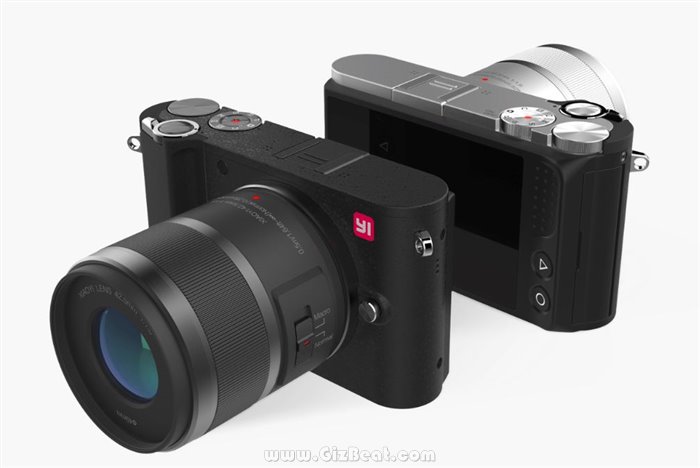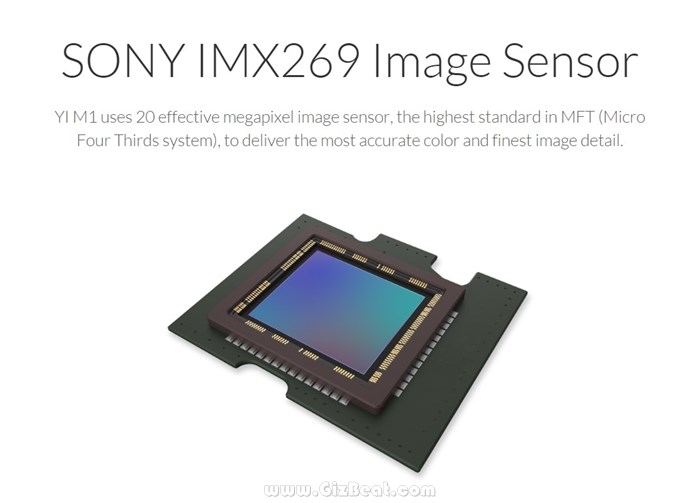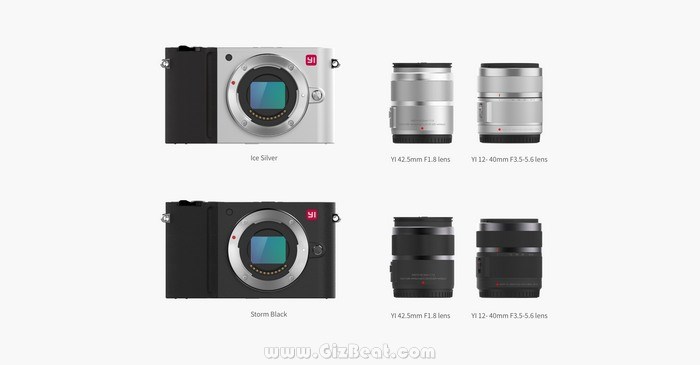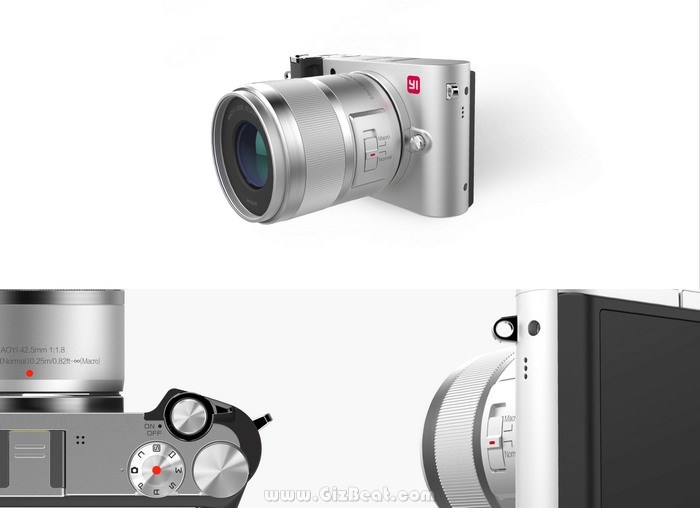20MP Sony IMX269 Xiaomi M1 camera review specifications
20MP Sony IMX269 in Xiaoyi M1 Young Innovators Xiaomi M1 Y
Most people know Xiaomi for their mobiles, but they’ve also released a slew of other products including power banks, routers, USB lights, headphones, car chargers, air purifiers, smart watches, bathroom scales, action cams, tablets, and Bluetooth speakers.

One step further with Xiaoyi M1 Xiaomi M1
Xiaomi will be making their Xiaomi M1 available in the USA through official channels
Leaving no stone unturned, Xiaomi has now entered themselves directly into the enthusiast interchangeable lens camera (ILC) market with the Yi M1.
An interchangeable lens camera (ILC) is a camera which a user can remove one lens and put on another.
The photographer can then use different lenses for different situations. Generally enthusiast and pro photographers will have lenses for macro photography, lenses for typical all-purpose daily lens that would be good for most situations but not specialized in any area, and another for long zoom.
Portrait photographers will also have specific lenses with big aperture (f1.8 or bigger) that help to produce that beautiful big-sensor-bokeh (background blur) we see in wedding shots and similar portrait style shots.
Some long time photographers may have dozens of lenses they’ve acquired over the years.
Available in America
Though the Xiaomi M1 is currently only available in China, Xiaomi will be making their Xiaomi M1 available in the USA through official channels.

The competition
The mirrorless ILC market is extremely competitive. Generally the top brands in the mirrorless ILC market are considered to be Panasonic, Sony, Olympus, and to some extent Canon.
dSLR cameras bounce light off of a mirror to a prism and into the viewfinder for your eye to see.
Mirrorless cameras don’t have a mirror. Instead, the sensor reads the light and transmits the data to the LCD.
dSLR vs mirrorless
The benefit to dSLR is that the view is instantaneous; there’s zero delay, which can be extremely important for pro shooters. This gap widens in lower light situations, as the sensor needs to be able to read more light to appropriately send an image to the LCD.
The benefit of mirrorless is that the camera can apply white balance, shutterspeed, color adjustments and other custom settings to the preview image. Perhaps more importantly, with no need to make room for a mirror and prism, mirrorless cameras can be much smaller than dSLR cameras.
Differences in the past
There have been other differences in the past that tipped the balance towards dSLR or mirrorless based on a photographer’s need, but that gap is narrowing significantly as technology for dSLR and mirrorless is improving for both camera types.
Lens selection
An example would be lens selection. dSLR are able to fit lenses from the 35mm film era, and up until just a few years ago, dSLR was hugely dominant, so they have a huge selection of lenses (glass) available.
As time goes on though, mirrorless has come on very strong and most mirrorless systems have a good selection of glass available.
dSLR LCD preview and auto-focus
Tipping back towards tech in dSLR, they’re now beginning to come with LCD preview capabilities, just as with mirrorless, though dSLR needs to revert to contrast detect auto focus (CDAF), which is slower than phase detect auto focus (PDAF).
Which brings up another benefit of dSLR in days past, up until just very recently, mirrorless were stuck with CDAF focus only, but now we’re beginning to see PDAF available in some models.
Sensor size
In the past, dSLR held the big advantage of sensor size and image quality (IQ). However, technology has come so far forward that the IQ gap has narrowed to a point where it’s mostly insignificant for the majority of photographers.
I’m considering a serious camera, dSLR or mirrorless?
If you want our take on it, unless you’re a pro photographer who needs a huge variety of lenses or need instantaneus live view, the easy choice is the far more compact mirrorless cameras.
Much to users chagrin, and without official explanation, Samsung has recently left the camera market.
Xiaoyi M1 / Xiaomi M1 lenses
Typically, an ILC camera can be bought by itself with no lens, or in a kit. The kit lens these days is normally an f3.5-f5.6 3x zoom lens. Occasionally ILC cameras are also offered in a kit with a prime lens.

A prime lens is a lens with a fixed focal length; it can’t be zoomed.
The benefit of a prime lens is that it can be tailored to fit a specific type of photography; e.g. portrait, macro, fisheye, wide angle.
A zoom lens generally needs to much more flexible so it will carry decent IQ across its zoom range. Most zoom lenses have a sweet spot, or focal length at which they shoot the sharpest images, with some focal lengths showing a significant degradation in IQ than other focal lengths.
The Sony IMX269 sensor
Xiaomi M1 will carry the Sony IMX269 sensor. This is a 20MP Micro Four Thirds sensor with a pixel size of 3.3 µm (0.001mm — 1/1000 of a millimeter — 1 micrometer).
To put this into perspective, the typical 1/3.06″ 13MP sensor in many mid-range mobiles, which includes sensors such as Sony IMX214 and Sony IMX258, the pixel size is 1.12 μm and with 55% less pixels than Sony IMX269.

RAW
Important to pros and some enthusiasts, the Xiaomi M1 can capture Digital Negative (DNG) RAW images from the Sony IMX269.
A camera that shoots RAW is able to save the raw sensor data, generally without any processing from the camera.
A RAW image has more malleability than a JPG images. In addition to not applying compression, it allows the photographer to more effectively adjust white balance, tonal curves, and other such fine tuning, as well allowing improved detail recovery from highlights and shadows.
DNG
Notably, the Xiaomi M1 is using Adobe’s DNG file format, which is has the advantage of being an open standard. Adobe’s DNG converter puts the image in a standardized container which allows the image to be adjusted without waiting for updates to software packages to support a specific camera.
4K
With the Sony IMX269, the Xiaomi M1 will be capable of 4K@30fps. While it’s fairly standard in flagship mobiles these days, 4K in cameras generally isn’t included as a feature until hitting into $600+ territory. It requires massively more processing power to generate 4K video from a comparatively tiny mobile phone sensor.
Notably, Canon is releasing their new M5 $1000 mirrorless ILC without 4K, so seeing it here in the Xiaomi M1 for as little as $329 is big news.
In addition to 4K@30fps, the Xiaomi M1 with Sony IMX269 will also shoot video in 2K/30P, 1080P@60 or 30fps, 720P@60fps or 30fps, and 24P@30fps.
How much is Xiaoyi M1 / Xiaomi M1 camera?

In China, you can buy the Xiaomi M1 camera with the standard 3.3x zoom lens for an incredibly low $329, or in a kit with the f3.5-5.6 12mm-40mm zoom lens and f1.8 42.5mm (85mm full frame equivalant) prime lens for an equally incredible $449.
Get the dual kit
If you’re considering moving up in the world with a camera such as this, we would recommend going with the dual lens kit with the f1.8 prime. This lens is made to capture those creamy telephoto bokeh shots where the subject stands out against a blurred foreground or background.
We’re hoping to also eventually see the kit with just this lens available. Or, just the camera body so photographers can choose their lens from the existing MFT system. According to Xiaomi, the Xiaomi M1 will be compatible with more than 50 already existing lenses in the MFT marketplace.
When will Xiaomi M1 camera be available?
It’s available now and already officially released in China.
https://gizbeat.com/10855/20mp-sony-imx269-xiaomi-m1-camera-review-specifications/https://gizbeat.com/wp-content/uploads/xiaomi-m1-camera-xiaoyi-m1-camera-450x301.jpghttps://gizbeat.com/wp-content/uploads/xiaomi-m1-camera-xiaoyi-m1-camera-150x150.jpgCamerasFeaturedXiaomi20MP Sony IMX269 in Xiaoyi M1 Young Innovators Xiaomi M1 Y Most people know Xiaomi for their mobiles, but they’ve also released a slew of other products including power banks, routers, USB lights, headphones, car chargers, air purifiers, smart watches, bathroom scales, action cams, tablets, and Bluetooth speakers. One step further...Damian Parsonshttps://plus.google.com/107879368390224447304 [email protected]AdministratorHi, I'm Damian Parsons. I've been working with Android phones since the first Droid came out. I'm fascinated by computers and technology. My first BBS were ran on an old Apple IIc and Commodore 64. I work hard to bring the latest updates to you every day - without all the boring fluff. Please subscribe to keep up on the newest China tech. See our forum -> www.chinaphonearena.comGizBeat





Leave a Reply